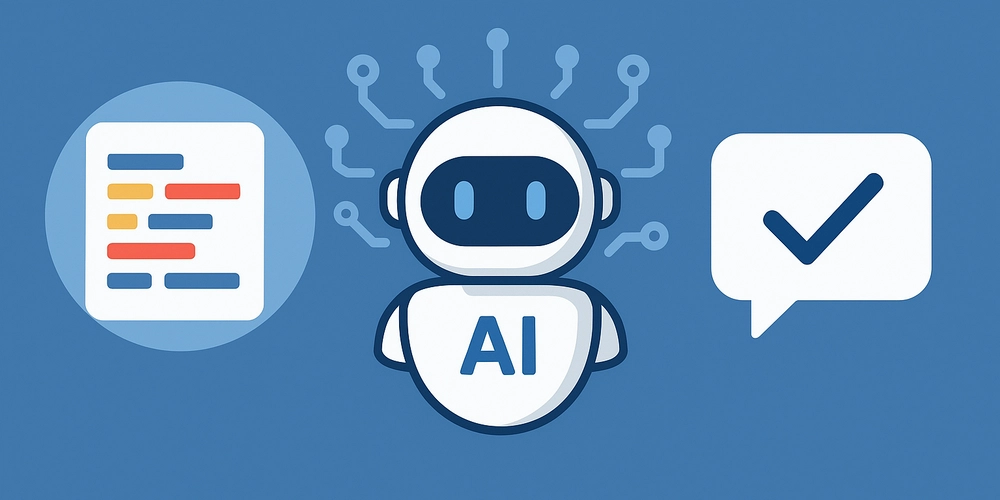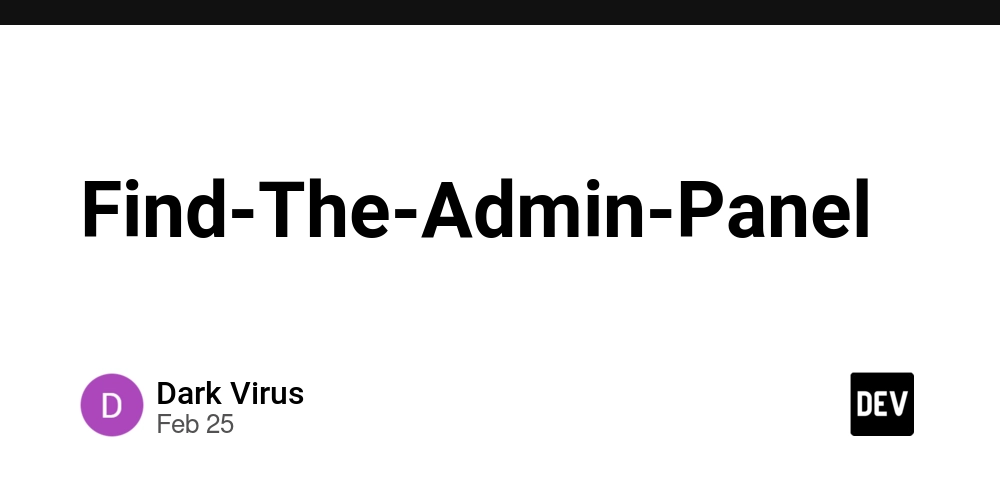Automating GitHub Code Reviews with AI agent
Introduction Code reviews are essential for maintaining high-quality software, but they can be time-consuming. What if I could automate code reviews using AI? In this article, I'll walk through building an AI-powered Code Review Agent using LangGraph and integrating it with GitHub Actions. This agent will analyze pull requests, identify issues, and provide feedback—all automatically! Why Use an AI Agent for Code Reviews? AI agents are designed to process information, make decisions, and take actions autonomously. For this project, I leveraged an AI agent to automate code reviews because: It Mimics a Human Reviewer: Unlike simple static analysis tools, the AI can provide detailed feedback that considers the context of the code changes. It Automates a Repetitive Task: Developers often spend hours reviewing pull requests manually. The AI agent reduces this burden by handling the initial review process. It Provides Intelligent Suggestions: The agent uses GPT-4o to analyze code, detect potential issues, and suggest improvements in natural language. It Integrates Seamlessly with GitHub: The AI is triggered automatically when a pull request is opened or updated, ensuring timely feedback. By using an AI agent, I created a system that streamlines the review process, enhances code quality, and allows developers to focus on more complex aspects of their projects. Why This Project Matters Solving Real-World Challenges Traditional code reviews can be: Time-Consuming: Developers spend significant time manually reviewing pull requests. Inconsistent: Different reviewers may have different coding standards. Limited in Scope: Human reviewers may miss security vulnerabilities or best practices. This AI-powered code review agent eliminates these problems by: Providing Instant Feedback: Developers get automated review comments as soon as they create a PR. Ensuring Consistency: AI applies the same standards across all reviews. Enhancing Security: Automated static analysis helps detect vulnerabilities early. Why It’s Innovative Unlike basic linters or rule-based static analyzers, this AI-powered reviewer: Understands Code Semantics: It leverages GPT-4o to analyze code logic, not just syntax. Offers Contextual Feedback: Instead of just pointing out issues, it suggests improvements based on best practices. Adapts to Projects: It can be fine-tuned for different coding styles and guidelines. Tech Stack LangGraph: For building the AI workflow. OpenAI GPT-4o (via Azure): To perform the actual code analysis. GitHub Actions: To trigger the agent on PRs. Python: For scripting and automation. How I Used LangGraph LangGraph is a graph-based framework built on LangChain that helps structure AI workflows. I used it to: Create a Multi-Step Workflow: The AI goes through several stages—fetching PR details, analyzing the code, running static analysis, and generating review comments. Define Nodes: Each step is encapsulated in a node, making the system modular. Manage State: Using LangGraph’s state management, I ensure each step has access to relevant data. Automating PR Reviews Now, whenever a PR is created or updated, my GitHub Action triggers the AI agent, and comments appear in the PR. Conclusion By combining LangGraph with AI, I created an automated, modular, and scalable code review agent. This can be extended further by adding custom linting checks, security analysis, or even interactive feedback loops. What do you think? Would you use an AI-powered code reviewer in your projects? Let me know in the comments!

Introduction
Code reviews are essential for maintaining high-quality software, but they can be time-consuming. What if I could automate code reviews using AI? In this article, I'll walk through building an AI-powered Code Review Agent using LangGraph and integrating it with GitHub Actions. This agent will analyze pull requests, identify issues, and provide feedback—all automatically!
Why Use an AI Agent for Code Reviews?
AI agents are designed to process information, make decisions, and take actions autonomously. For this project, I leveraged an AI agent to automate code reviews because:
- It Mimics a Human Reviewer: Unlike simple static analysis tools, the AI can provide detailed feedback that considers the context of the code changes.
- It Automates a Repetitive Task: Developers often spend hours reviewing pull requests manually. The AI agent reduces this burden by handling the initial review process.
- It Provides Intelligent Suggestions: The agent uses GPT-4o to analyze code, detect potential issues, and suggest improvements in natural language.
- It Integrates Seamlessly with GitHub: The AI is triggered automatically when a pull request is opened or updated, ensuring timely feedback.
By using an AI agent, I created a system that streamlines the review process, enhances code quality, and allows developers to focus on more complex aspects of their projects.
Why This Project Matters
Solving Real-World Challenges
Traditional code reviews can be:
- Time-Consuming: Developers spend significant time manually reviewing pull requests.
- Inconsistent: Different reviewers may have different coding standards.
- Limited in Scope: Human reviewers may miss security vulnerabilities or best practices.
This AI-powered code review agent eliminates these problems by:
- Providing Instant Feedback: Developers get automated review comments as soon as they create a PR.
- Ensuring Consistency: AI applies the same standards across all reviews.
- Enhancing Security: Automated static analysis helps detect vulnerabilities early.
Why It’s Innovative
Unlike basic linters or rule-based static analyzers, this AI-powered reviewer:
- Understands Code Semantics: It leverages GPT-4o to analyze code logic, not just syntax.
- Offers Contextual Feedback: Instead of just pointing out issues, it suggests improvements based on best practices.
- Adapts to Projects: It can be fine-tuned for different coding styles and guidelines.
Tech Stack
- LangGraph: For building the AI workflow.
- OpenAI GPT-4o (via Azure): To perform the actual code analysis.
- GitHub Actions: To trigger the agent on PRs.
- Python: For scripting and automation.
How I Used LangGraph
LangGraph is a graph-based framework built on LangChain that helps structure AI workflows. I used it to:
- Create a Multi-Step Workflow: The AI goes through several stages—fetching PR details, analyzing the code, running static analysis, and generating review comments.
- Define Nodes: Each step is encapsulated in a node, making the system modular.
- Manage State: Using LangGraph’s state management, I ensure each step has access to relevant data.
Automating PR Reviews
Now, whenever a PR is created or updated, my GitHub Action triggers the AI agent, and comments appear in the PR.
Conclusion
By combining LangGraph with AI, I created an automated, modular, and scalable code review agent. This can be extended further by adding custom linting checks, security analysis, or even interactive feedback loops.
What do you think? Would you use an AI-powered code reviewer in your projects? Let me know in the comments!




















































%20Abstract%20Background%20112024%20SOURCE%20Amazon.jpg)






















































































































![[The AI Show Episode 142]: ChatGPT’s New Image Generator, Studio Ghibli Craze and Backlash, Gemini 2.5, OpenAI Academy, 4o Updates, Vibe Marketing & xAI Acquires X](https://www.marketingaiinstitute.com/hubfs/ep%20142%20cover.png)
























































































































































































































































-Nintendo-Switch-2-–-Overview-trailer-00-00-10.png?width=1920&height=1920&fit=bounds&quality=80&format=jpg&auto=webp#)





















_Anna_Berkut_Alamy.jpg?#)













































































































![YouTube Announces New Creation Tools for Shorts [Video]](https://www.iclarified.com/images/news/96923/96923/96923-640.jpg)





































































![[Weekly funding roundup March 29-April 4] Steady-state VC inflow pre-empts Trump tariff impact](https://images.yourstory.com/cs/2/220356402d6d11e9aa979329348d4c3e/WeeklyFundingRoundupNewLogo1-1739546168054.jpg)





























































